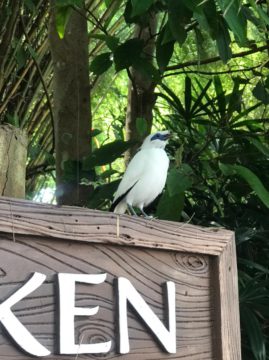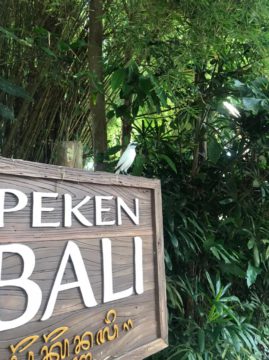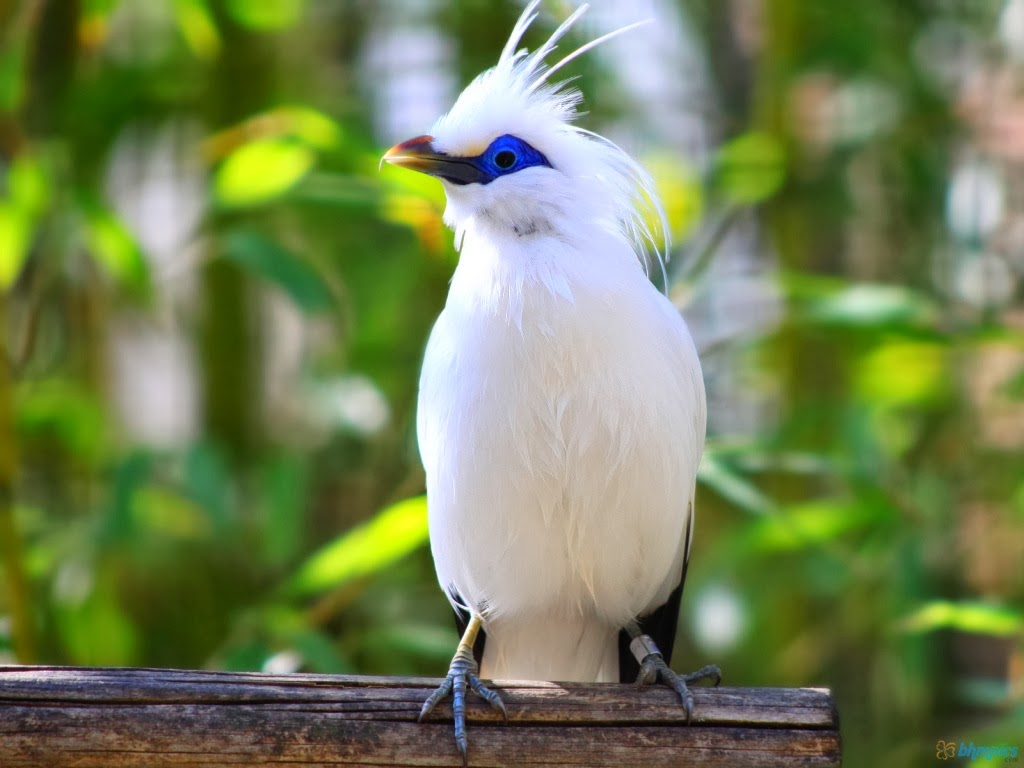The Bali mynah (Leucopsar rothschildi), also known as the Bali starling (jalak Bali) or Rothschild’s mynah, is a magnificently beautiful bird found exclusively in Bali that was initially identified as critically endangered in 1994. As recently as 2015, conservationists estimate that less than 1,000 Bali Mynahs remained in the wild, with perhaps an equal number kept in captivity,
While private ownership of the Bali Mynah is forbidden under current law, three successful government-monitored captive-breeding programs on the Island are managing to increase the captive populations that are now meticulously and selectively released over time back into nature.
In nature, these birds nest in hollow tree cavities, breeding during Bali’s rainy season. The mating ritual sees male mynahs call loudly and bob up and down to attract a female mate. The birds form a lasting bond and jointly bring food to their nest when two or three eggs hatch.
In an innovative program to rebuild a wild population, “breeding loans” of 15 male and 15 female Bali mynahs are loaned to local breeders from the Association of Starling Conservationists in Bogor, West Java. The “loan” is guaranteed with a cow that will be kept if the birds should die. The arrangement requires that 10% of the brood be released into a national park, allowing the remaining 90% to be sold. This program not only increases sustainable wild populations but also dramatically reduces the price of the birds on the black market and curbs the activity of poachers who thwarted past attempts to release Bali starlings back into the wild.


The popular Bali Safari Marine Park, located on the outskirts of Bali’s capital city of Denpasar, is an award-winning center for conserving rare and endangered species. By building breeding aviaries, a park-based genetically diverse population now resides at the Park.
A release program introduces the birds for free roaming in the Park, bringing us to this article’s miracle segment. While attending the opening ceremony for the South East Asian Zoos and Aquariums Association (SEAZA) Conference held at the Park, I saw a small group of free-roaming Bali starlings on the pathway a short distance away. Stopping to admire the birds, I became increasingly aware that more starlings were visible flying through nearby trees.
The birds did not scatter as I continued to walk, with one bird getting a closer look as it perched on a park sign allowing Sukma Widyantari, a member of the Park’s management, to snap the accompanying photos.
Bali Safari and Marine Park – one of Bali’s most popular tourist attractions, now provides another reason to visit or revisit. Walking through the Park, you can experience nature’s past and catch a glimpse of an ideal future by seeing an almost extinct bird roaming free in the wild.






